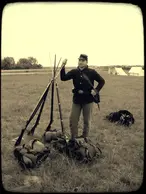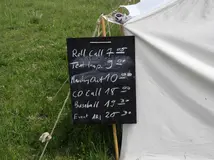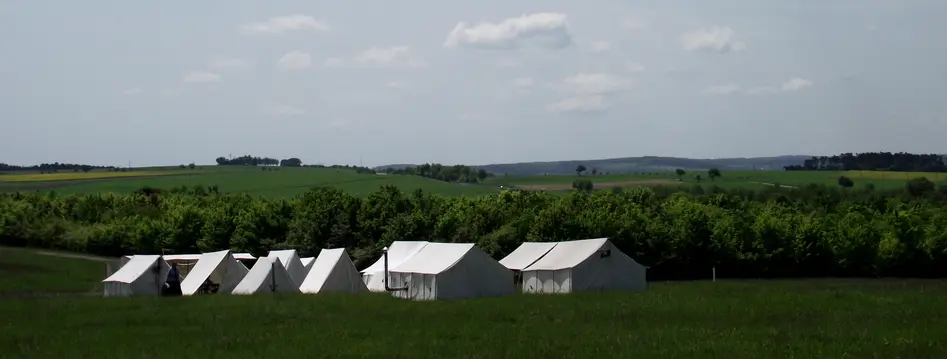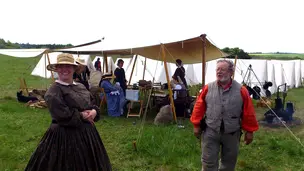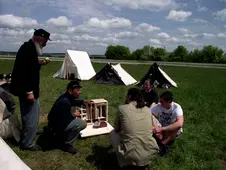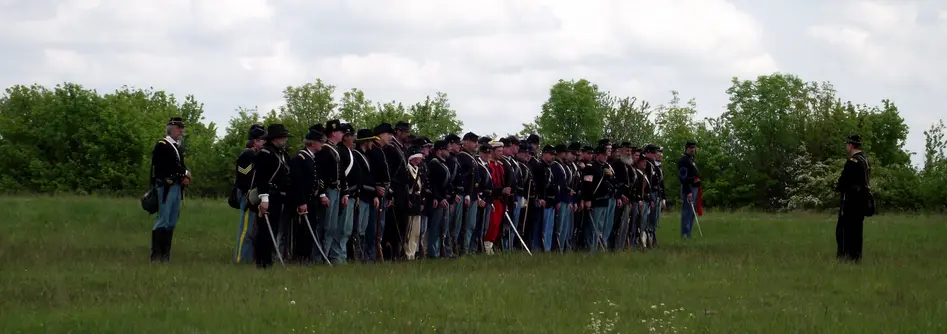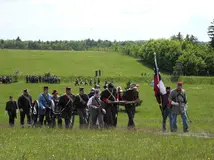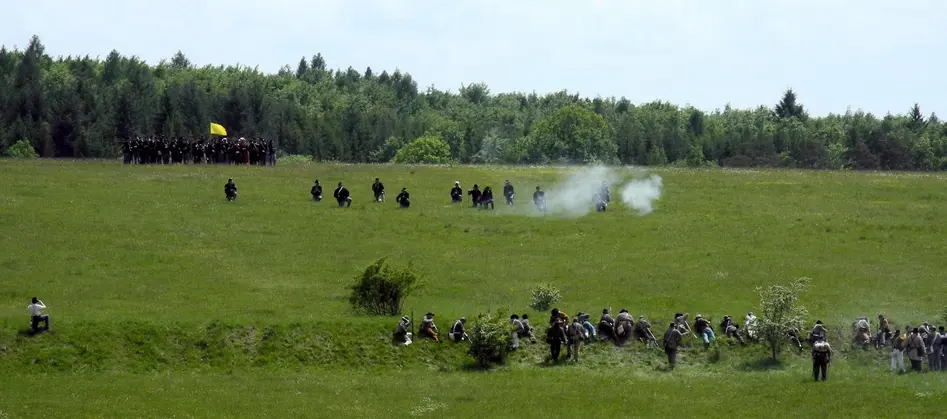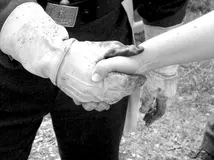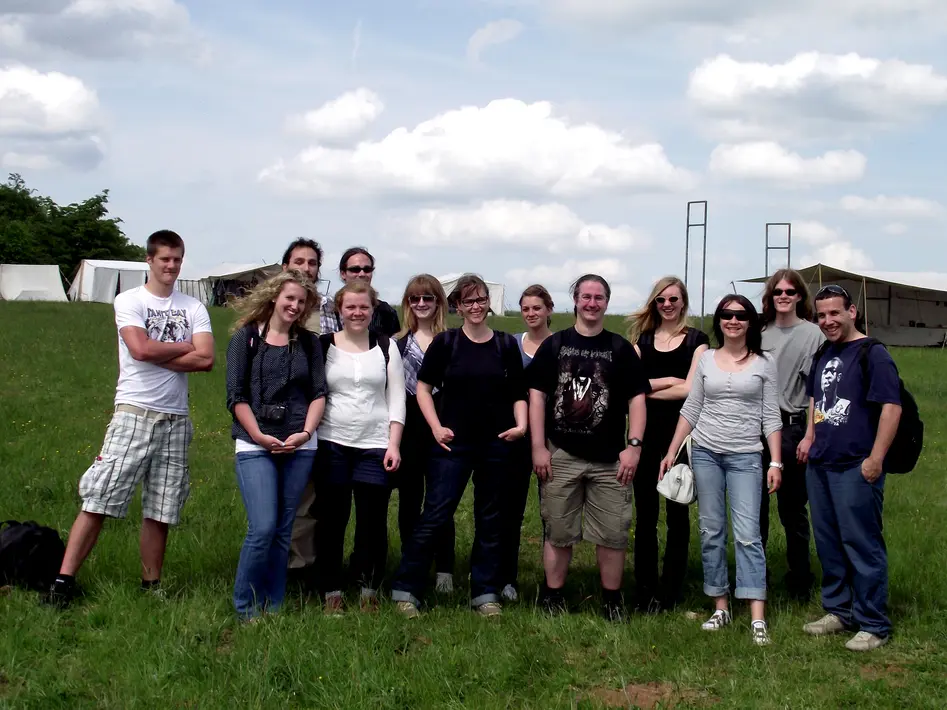A Field Trip Back in Time: American Civil War Reenactment in Walldürn, Germany
By Philipp Schmitt (Bamberg) and Cara Koehler (DePaul, Chicago)
Germans in the American Civil War – We couldn't have imagined to what extent the course title would ring true. In the beginning of the 2012 summer term it became quite obvious what the highlight of the class on Germans in the American Civil War would be: We would, in fact, visit a camp and battlefield to witness fights between Yankees and Johnny Rebels. So then "Let the Rifles ring and the bullets sing, to the sound of the clashing sabers"? Well, apparently there's no way to go that far in a regular university course, because – even with Dr. Konopka's tremendous willpower on your side – there are just no time machines yet.
Still, it became possible to experience an actual American Civil War reenactment – thanks to some dedicated history buffs whose favorite pastimes seems to be sharing a single sleeper tent with three fellow soldiers, chewing on "hardtack" (a substance one can either consider a type of bread or building material), and wearing three layers of woolen clothing on a 28 degree-Celsius day. These gentlemen – together with one or two ladies – invited us to visit their reenactment of the battles of the 4th Tennessee Infantry, a southern army regiment.
The expectations among the students prior to the field tripwere varied, ranging from, "Will they be some sort of para-military war-loving ex-Nazis, disguising their desire to fire guns by dressing in old fashioned costume?" to "Won't we spoil their event by invading their camp without the proper 19th-century clothes, and knowing nothing about how to behave on such an occasion?" But whatever one might have thought beforehand, it was nothing compared to what we finally witnessed on May 19th, 2012.
Welcomed by Miss Emma, a resolute southern lady, we were first escorted through the "Confederate camp." We met several soldiers, who helped us get familiar with the various ways to hold a rifle and its use, as well as their other equipment,such as the bayonet or cutlass. And despite the apparent delight they took in sharing their knowledge, they certainly deserve a proverbial Medal of Honor for standing through all our questions. The same can be said for the Union soldiers, who we encountered after we left the camp of the "Confederacy." With all their dedication and insight, they answered our countless questions, even when it came to details of battle formations and marching routes. Indeed, everybody appeared to welcome the chance to prove to an interested audience that they took historical research seriously, so that none of the re-enactors complained about the anxious and chattering flock of students running around their camp.
In spite of our long discussions, however, several questions remained ultimately unanswered: Why exactly did they choose to reenact the American Civil War? How were they connected to the event, and what attracted them to this subject?
In retrospect, it is our guess that the re-enactors, just as others who might, for example, collect stamps, would not be able to pinpoint the exact reason for their fascination. The re-enactors in Walldürn offered various explanations, but a unifying motif – apart from general interest in the mid-19th century and the Civil War in particular – couldn't be found.
After lunch break, the supposedly most dangerous part of the field trip was about to begin – we were going to watch an actual battle. But what were we to do, knowing that we would not be allowed to get too close to the front lines, despite the fact that no real bullets would be flying through the air? We fought the urge to lie in trenches and fire canons, and instead settled for the observer's role, finding a pleasant little hill to sit down on to watch the spectacle. After a while, a messenger passed us on horseback, and down a distant path to our left the Union troops marched into formation.
Right next to us, however, Confederate soldiers pulled two cannons up the hill, an act that demanded physical strength from all involved and reminded us once more that re-enactment was more than just make-believe. It was slightly worrying, but at the same time quite fascinating, to have one of the cannons positioned right next to us.
Soon enough a Confederate officer came over and cautioned us to cover our ears and open our mouths whenever we heard him give the command "Ready to Fire!" After several shots, however, most of us got accustomed to the noise and the pressure, and some even dared to uncover their ears.
After such an intense "opening," the rest of the battle was less exciting than we had anticipated, perhaps given the distance between us and the battlefield. Even the charge of the Northern troops was rather anticlimactic, given that the charging brigade wasn't too well-staffed, having only a dozen or so soldiers.
Still, we wouldn't have wanted to miss this experience. It was very interesting on the one hand to see history come to life, and to realize on the other hand that battle reenactment seems to consist of "only" about twenty percent fighting. Seventy percent of the effort went into recreating the camp life and enjoying its various social activities; the last ten percent probably had to do with intruders such as us, who may have interrupted the fantasy for one afternoon. As students of the Civil War era we are all the more grateful for this chance to have met this group of re-enactors who, in their very own way, are contributing to the historiography of the American Civil War.
